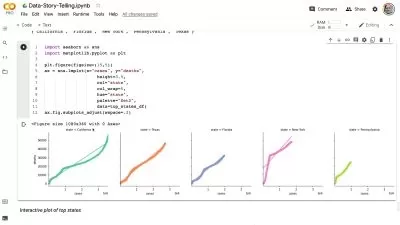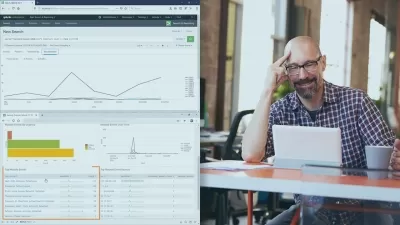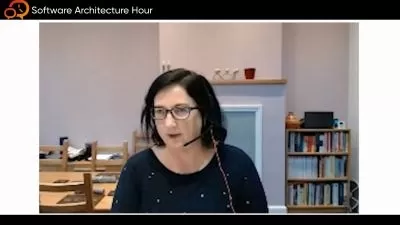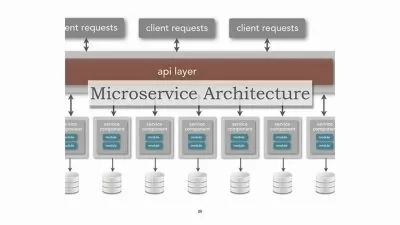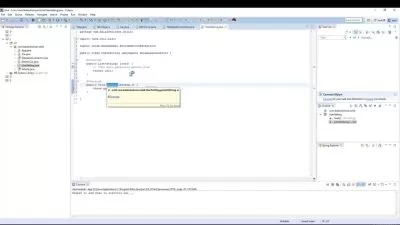01.01-course structure and approach.mp4
02:03
01.02-course pre-requisites.mp4
02:09
01.03-course audience.mp4
01:50
01.04-about the author.mp4
02:34
02.01-setting up a google cloud account.mp4
01:39
02.02-creating a dataproc cluster.mp4
12:47
02.03-google cloud platform (gcp) account best practices.mp4
02:55
03.01-big data logical architecture.mp4
20:00
03.02-evolution of big data technologies.mp4
11:15
03.03-key big data architectures.mp4
13:00
03.04-typical big data batch pipeline.mp4
02:13
03.05-typical big data streaming pipeline.mp4
08:31
03.06-example 01 big data streaming pipeline.mp4
02:41
03.07-example 02 big data streaming pipeline.mp4
03:09
04.01-factors to consider while comparing ingestion frameworks.mp4
12:18
04.02-kafka versus flume.mp4
10:54
04.03-nifi versus kafka.mp4
12:58
04.04-sqoop versus flume.mp4
06:12
04.05-sqoop versus kafka connect.mp4
06:33
04.06-installing nifi.mp4
07:11
04.07-installing kafka.mp4
07:39
04.08-hands-on kafka and nifi integration background.mp4
01:41
04.09-integrating kafka and nifi.mp4
24:10
05.01-factors to consider while comparing storage frameworks.mp4
09:16
05.02-hadoop distributed file system (hdfs) versus hbase.mp4
06:18
05.03-hbase versus kudu.mp4
05:25
05.04-hadoop distributed file system (hdfs) versus kudu.mp4
04:03
05.05-hbase versus cassandra.mp4
07:27
06.01-text versus binary.mp4
03:29
06.02-interoperability.mp4
02:11
06.03-row-oriented versus column-oriented.mp4
06:43
06.04-splittable formats.mp4
05:15
06.05-schema evolution.mp4
09:34
06.06-comparing data formats.mp4
08:28
06.07-installing sqoop on dataproc cluster.mp4
11:49
06.08-hands-on big data batch pipeline using the avro format.mp4
17:47
07.01-factors to consider while comparing processing frameworks.mp4
13:16
07.02-mapreduce (mr) versus spark logical architecture.mp4
07:17
07.03-mapreduce (mr) versus spark performance.mp4
01:29
07.04-spark versus tez.mp4
04:23
07.05-spark versus flink.mp4
10:47
07.06-kafka streams versus spark streaming.mp4
10:31
07.07-spark 2.x streaming versus spark 1.x streaming.mp4
05:39
07.08-spark core versus spark structured query language (sql).mp4
04:21
07.09-integrating kafka and spark streaming.mp4
12:01
08.01-factors to consider while comparing analysis frameworks.mp4
10:23
08.02-hive versus impala.mp4
07:09
08.03-hive versus pig.mp4
05:49
08.04-hive versus spark structured query language (sql).mp4
04:42
08.05-hive versus hive live long and process (llap) versus impala.mp4
06:49
08.06-hive versus ksql.mp4
06:22
08.07-ksql versus ksqldb.mp4
04:47
08.08-hands-on ksql.mp4
05:55
08.09-writing to a stream and table using ksql.mp4
12:24
08.10-streaming extract transform load (etl) pipeline background.mp4
06:09
08.11-building a scalable extract transform load (etl) pipeline with kafka connect-part 1.mp4
17:31
08.12-building a scalable extract transform load (etl) pipeline with kafka connect-part 2.mp4
03:53
09.01-solr versus elasticsearch.mp4
07:00
09.02-cloudera search versus solr.mp4
02:47
09.03-oozie versus airflow.mp4
04:52
09.04-ksql vs kstreams.mp4
06:55
10.01-conclusion.mp4
01:10
9781801075596 Code.zip






